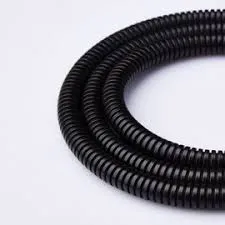Metal Corrugated Conduit for Enhanced Flexibility and Durability in Electrical Systems
Understanding Metal Corrugated Conduit A Comprehensive Overview
In the realm of electrical installations and protective wire management systems, metal corrugated conduit has emerged as a staple component due to its unique properties and benefits. This flexible, durable option offers an ideal solution for various applications, particularly in industrial and commercial settings where the highest standards of safety and performance are required.
What is Metal Corrugated Conduit?
Metal corrugated conduit is a type of raceway that houses electrical wires or cables, providing essential protection from environmental hazards such as moisture, dust, and physical impact. Unlike traditional rigid conduits, corrugated options are designed to be flexible, which allows for easier installation and adaptability in spaces with complex geometries. The conduit is typically made from metals such as aluminum or galvanized steel, which not only gives it substantial strength but also enhances its resistance to corrosion.
Advantages of Metal Corrugated Conduit
1. Flexibility and Ease of Installation The corrugated design of this conduit allows it to bend and twist to fit into tight spaces, which significantly reduces the amount of fittings and connectors needed during installation. This flexibility translates into faster installation times, making the overall project more efficient.
2. Durability Metal corrugated conduits are engineered to resist wear, tear, and environmental elements. Their robust construction provides a high level of protection against physical damage, making them suitable for high-impact areas such as manufacturing plants and warehouses.
3. Corrosion Resistance Many metal corrugated conduits undergo treatments or are made from materials that resist rust and corrosion. This is particularly important in environments where chemical exposure is likely, ensuring that the conduit maintains its integrity over time.
4. Electrical Grounding Since metal conduits are conductive, they can also serve as a grounding mechanism for electrical systems. This adds an extra layer of safety, as any fault in the electrical circuit can be effectively grounded to prevent electrical hazards.
5. Fire Resistance Metal conduits can withstand high temperatures and are less likely to ignite compared to plastic alternatives, making them a safer choice in fire-prone environments.
Applications of Metal Corrugated Conduit
Metal corrugated conduits are widely used across various industries. Their applications include
metal corrugated conduit

- Industrial Facilities In manufacturing and processing plants, these conduits protect power and control cables, ensuring that operations remain uninterrupted by electrical disruptions
.- Commercial Buildings Offices and retail spaces often utilize metal conduits to safeguard wiring systems, facilitating the safe use of electrical appliances while maintaining aesthetic appeal.
- Transportation Systems From railways to airports, these conduits protect the wiring of signals and communication systems, ensuring safety and reliability in transportation networks.
- Telecommunication Metal corrugated conduits are also used to protect fiber optic cables and other telecommunication wiring, helping to maintain the integrity of communication systems.
Installation Considerations
When considering the installation of metal corrugated conduit, several factors should be taken into account
1. Compliance with Standards Ensuring that the installation meets local electrical codes and standards is crucial for safety and legality. Always consult guidelines from relevant authorities.
2. Choosing the Right Size Correct sizing is essential to accommodate the cables and allow for expansion and contraction due to temperature changes. This prevents the risk of damage to both the conduit and the cables.
3. Securing the Conduit Proper securing methods, such as straps or clamps, should be used to support the conduit and maintain its position. This is particularly important in areas with high vibrations or movement.
4. End Sealing To prevent dust and moisture ingress, the ends of the conduits should be sealed properly. This ensures longevity and reliability of the electrical systems housed within.
Conclusion
Metal corrugated conduit serves as an invaluable asset in various electrical installations, combining flexibility, durability, and safety features. As industries continue to evolve and demand higher standards in electrical management systems, the importance of reliable protective solutions like metal corrugated conduit will only continue to grow. Future developments in manufacturing processes and materials promise to enhance the performance of this conduit, making it a longstanding choice for professionals in the field.








